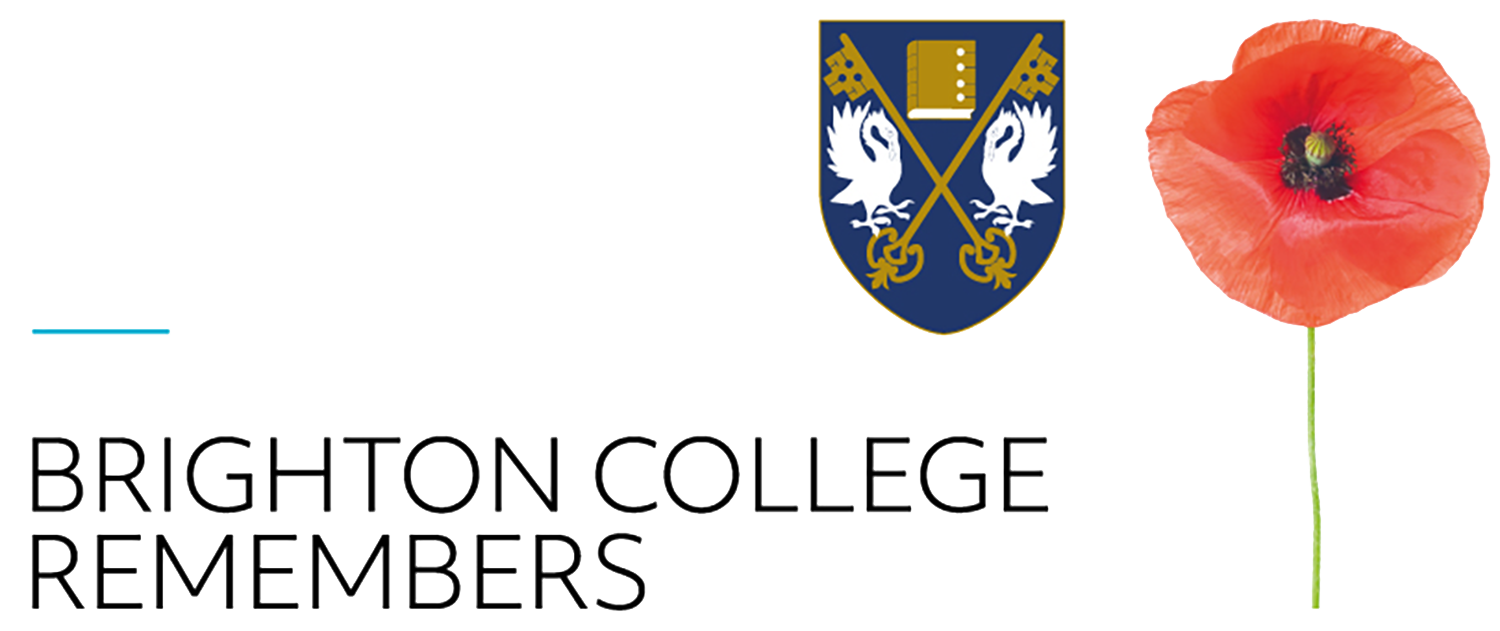Second Lieutenant, London Regiment
Born: July 8th 1895
Died: September 25th 1915
Age at Death: 20
Killed in action, France, September 26th 1915
Royal Fusiliers 1914.
20th Battalion The London Regiment 2nd Lieut. 1915.
Orderly Officer to the General Commanding 141st Infantry Brigade, mentioned in Dispatches.
Brother to Leslie A. Young (Sc. 1905-08). Son of Emilius Alexander Young (BC 1872-1878), agent to Lord Penryn. Died 22nd Sept, 1910. Son of A. Young Esq of 3 Abderdeen Terrace, Blackheath, London.
A donation to the memorial statue has been made in honour of this soldier by S J Cockburn (Le/Sc. 1953-58), P F Cockburn (Sc. 1959-64), Miranda Grainger nee Cockburn (Fe. 1983-58), Izzy Grainger (Fe. 2007-12) and Peony Grainger (He/Fe. 2009-14).
2nd Lieutenant Alan Emilius Young
Alan Young was born in Bangor, Wales in 1896, the 3rd son of Emilius Alexander Young and Eliza Lillie Young. Alan Young was the third of the brothers, one of whom was also an Old Brightonian. Eliza Young was the daughter of Marmaduke Capper Matthews, a prominent London solicitor who had once been used by Charles Dickens in his alternative guise as a property developer. Emilius Alexander Young had initially trained as an accountant but later became business manager at Penhryn Slate Quarry in Wales and also expanded into managing the shipping interests of the Sackville-West estate. The family therefore became very prosperous and the house where Alan was born, Tyn-y-Brym in Bangor, is a typical example of the handsome, rather than beautiful, home of the successful Victorian businessman.
Although it appears that Emilius Young was a relatively humane manager he, in common with his employer Lord Penhryn was determined to stop the Unionisation of his workforce at all costs. They therefore endeavoured to prevent Union dues being collected at the quarry and sought to bring in contractors to undermine the established workforce when the latter used collective bargaining to demand higher wages. In response some of the contractors were physically assaulted by the workforce and the rest of the workers came out in an extensive strike which lasted from 1900 to 1903. An interesting footnote is that in a legal case connected with the physical attack on the contractors the established workers were represented in court by David Lloyd George. This presents a stark contrast to the stance taken against Welsh strikers taken by his Liberal colleague Winston Churchill ten years later.
Throughout this turbulent period Emilius Young continued to manage the quarry but then died relatively young (aged 50) in 1910. Following his death the family moved to 13 Morden Road, Blackheath, London. However it is unclear why Emilius and his older brother Leslie attended Brighton College because the move to the school preceded the move to London by some years and at least one of the other brothers went to Wellington College instead. At the school Alan Young was a Fives player of considerable repute, while in the Junior House Fives team his pair was judged to ‘far superior to any of the others’. However reports are more critical of his performance on the cricket field one rather damningly reporting that ‘Young [can] hit very hard and straight, but has no defence. Rather slow in the field.’ In his final year Young was made a Prefect before leaving the school and joining the army a short while later on the outbreak of the First World War. He was evidently a young man of some means following his father’s death because his estate was valued for probate in 1916 at £5,309.
On March 14th 1915 he received a commission as a second Lieutenant in the 1st/20th Battalion of the London Regiment (Blackheath & Woolwich), his local battalion given where the family was then living, which formed part of the 47th Division. It was as part of this unit that he was involved in the first day of the Battle of Loos on 25 September 1915. The BEF as a whole suffered very heavy casualties in the Battle of Loos which contributed to the sacking of its then commander Sir John French in December 1915 but the 1/20th Battalion's casualties, at 9 officers and 162 other ranks, were actually the lowest of any of 47th Division's assaulting battalions. Unfortunately Alan was one of those 9 officers who became casualties and after having initially been declared missing was later numbered among the dead. His body was never found but he is commemorated on the Loos War Memorial and on the War memorial in his hometown of Bangor, North Wales.
Source: LEST WE FORGET PROJECT, Brighton College 2014/15

